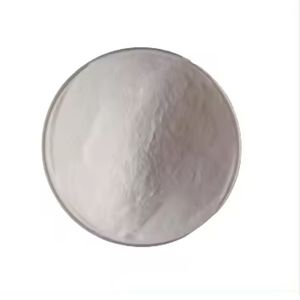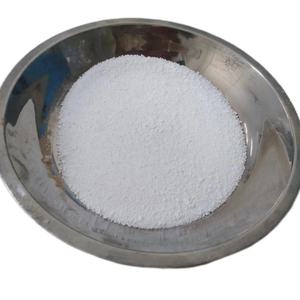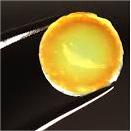Professional industry ceramic supplier, silicon nitride, silicon carbide, aluminum nitride and any other kinds of ceramics.
1. Introduction
When it comes to handling extreme heat, few materials can match the performance of a silicon carbide crucible. Known for its exceptional thermal conductivity, resistance to thermal shock, and durability at high temperatures, silicon carbide (SiC) has become the go-to choice for metallurgy, laboratory research, and even specialized cookware. But what exactly makes this advanced ceramic so reliable? And how does it compare to alternatives like zirconia crucibles or silicon nitride components? In this article, we’ll break down everything you need to know about the silicon carbide crucible—and why it’s more than just a container for molten metal.

2. What Is a Silicon Carbide Crucible?
A silicon carbide crucible is a high-performance vessel made from sintered or reaction-bonded silicon carbide ceramic. Designed to withstand temperatures exceeding 1600°C (2912°F), these crucibles are commonly used for melting non-ferrous metals like aluminum, copper, and zinc, as well as in analytical chemistry and semiconductor processing. Unlike traditional clay-graphite crucibles, silicon carbide versions offer superior oxidation resistance, longer service life, and minimal contamination of the melt.
3. Key Properties of Silicon Carbide

Silicon carbide stands out among advanced ceramics due to its unique combination of mechanical strength, thermal stability, and chemical inertness. It boasts one of the highest hardness ratings among engineering materials—second only to diamond—and maintains structural integrity even under rapid temperature changes. Its high thermal conductivity allows for efficient heat distribution, reducing hot spots and improving process consistency. These traits make silicon carbide ideal not just for crucibles, but also for components like silicon carbide burner nozzles, silicon carbide brick linings, and silicon carbide ceramic tubes used in tube furnaces.
4. Industrial Applications Beyond Crucibles

While the silicon carbide crucible dominates high-temperature labs and foundries, SiC’s versatility extends far beyond. In industrial settings, you’ll find rbsic silicon carbide tile blocks lining kilns, silicon carbide ceramic columns supporting heavy loads, and silicon carbide thermocouple protection tubes shielding sensitive instruments. Even plumbing benefits from this material—silicon carbide ceramic piping and disc taps offer unmatched wear resistance in abrasive fluid environments. On the manufacturing side, silicon carbide grinding discs and sanding discs are staples in precision machining and pottery finishing.
5. Silicon Carbide vs. Other Advanced Ceramics
Comparing silicon carbide to alternatives reveals important trade-offs. For instance, boron carbide vs silicon carbide often comes down to application: boron carbide (B4C) is harder and better for armor, but more expensive and less thermally conductive. Meanwhile, zirconia crucibles excel in oxygen-rich atmospheres but suffer from lower thermal shock resistance. Silicon nitride, another high-performance ceramic, offers excellent fracture toughness and is used in components like silicon nitride rings, plates, and custom heat shields—but it typically can’t match SiC’s thermal conductivity. That said, specialized operations may use both: a silicon nitride crucible factory might produce labware for specific reactive melts where SiC would degrade.
6. Unexpected Uses: From Dinnerware to Decor
Surprisingly, silicon carbide isn’t confined to factories and labs. Thanks to its non-toxic nature and heat retention, it’s increasingly used in premium kitchenware. You’ll find items like silicon carbide ceramic baking dishes, casserole dishes with lids, pie dishes, salad bowls, and even children’s plates—all marketed for oven-to-table use. Brands sometimes reference aesthetics with terms like ‘silicon carbide white ceramic plates’ or ‘silicon carbide black plates ceramic,’ though true SiC dinnerware is rare; many products use the name for marketing while being made from conventional stoneware. Still, genuine silicon carbide ceramic dinnerware offers unmatched durability and thermal performance.
7. Manufacturing and Material Variants
Silicon carbide components come in several forms: sintered (SSiC), reaction-bonded (RBSiC), and nitride-bonded. RBSiC is common for crucibles and tiles due to its cost-effectiveness and good mechanical properties. High-purity variants are essential for semiconductor and solar industries, where contamination must be minimized. Related materials like alumina (Al2O3), zirconia (ZrO2), and aluminum nitride (AlN) serve complementary roles—alumina tubes for electrical insulation, zirconia rods for wear parts, and high purity silicon nitride powder for advanced structural ceramics.
8. Choosing the Right Crucible or Component
- Consider operating temperature and atmosphere (oxidizing vs. inert).
- Evaluate chemical compatibility with your melt or process media.
- Assess mechanical stress and thermal cycling frequency.
- For non-industrial uses like bakeware, verify if the product is truly made from silicon carbide ceramic or simply styled to resemble it.
9. Conclusion
The silicon carbide crucible exemplifies the power of advanced ceramics in solving real-world engineering challenges. Whether you’re melting metal in a foundry, protecting sensors in a furnace, or baking a casserole in a stylish dish, silicon carbide delivers unmatched performance. While alternatives like silicon nitride and boron carbide have their niches, SiC remains the gold standard for high-temperature, high-wear applications. As manufacturing techniques improve and costs decrease, expect to see even broader adoption of silicon carbide across both industrial and consumer markets.
Our Website founded on October 17, 2012, is a high-tech enterprise committed to the research and development, production, processing, sales and technical services of ceramic relative materials such as Silicon. Our products includes but not limited to Boron Carbide Ceramic Products, Boron Nitride Ceramic Products, Silicon Carbide Ceramic Products, Silicon Nitride Ceramic Products, Zirconium Dioxide Ceramic Products, etc. If you are interested, please feel free to contact us.




